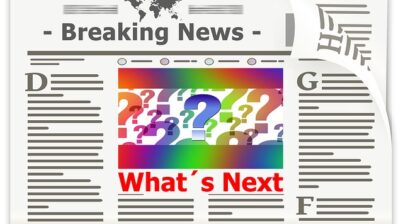An experienced HR professional will have his/her “finger on the pulse” and have experienced-driven insights into the health of an organization from a people perspective. But what if you know that a change needs to be made – be it in employee engagement, recruitment, reward, compensation, and so forth – but you don’t have a way to prove that that change needs to happen? Most organizations, however, now know that the way to justify decisions comes through data and the analysis of that data.
Almost all modern organizations now strive to be “data-driven”, but are they? This Forbes piece, “10 Reasons Why Your Organization Still Isn’t Data-Driven,” explains that a strong data culture creates success in organizations. But this Inc. article, “Your Organization Won’t Survive Without People Analytics, But There’s A Dark Side,” acknowledges that many HR departments don’t have the data science background to understand their data properly, even if they do have metrics.
But what exactly are the metrics that can be measured? Where should my organization start, you may ask? Here’s an explanation of examples of HR analytics and metrics that you can measure.
What is HR analytics?
Hayfa Mohdzaini, Senior Research Adviser in Data, Technology and AI at the Chartered Institute of Personnel and Development (CIPD) notes that HR analysis is “about gathering and analyzing data about people in a workforce.” They continue, “People data is found in HR systems, from other departments like IT and sales, and from external sources such as salary surveys. Using people data offers the opportunity to contribute to an organization’s strategy by creating insights on what people can do to drive change.”
In a nutshell, organizations can use people data (HR analytics data and metrics) to help with organizational planning and strategy.
For example, without data, you’d never know when your organization needs to hire a new employee. If you didn’t know that two people from the sales department had left or the operations team had an increased workload, then you would just assume that everything was okay.
Data is an important tool to help keep the organization running smoothly. And the three types of HR analytics are descriptive, predictive, and prescriptive. For more, see the different types of HR analytics, and more about what HR analytics is.
What can HR analytics data tell you about your workforce?
Companies use people data/HR analytics to understand the workforce. Are they engaged? Are they performing well? Are they happy? Is their wellbeing taken into account? Is the company meeting diversity, equity, and inclusion metrics? Then, this data is used for effective workforce planning. How can you ensure you hire the correct number of people who fit in the organization at the right time? Are employees leaving for better benefits and higher pay? How can you make your organization’s offerings more attractive so you don’t lose top talent? And so forth.

Data enables evidence-based and data-driven decisions to improve the workforce and organizational performance. For example, good HR data can track how HR policies and processes impact employees, and it can be used to estimate the return on investment of changes and financial health.
When used and interpreted well, metrics to make organizational change for the better – enhances employee morale and engagement and improves retention.
What HR metrics can I measure?
There are many HR metrics to measure, such as headcount, recognition, turnover, retention, diversity, recruiting, engagement, performance, employer brand, and more. Those are the broad categories, and you can deep dive into each category to break down metrics further. For example, under the “retention” umbrella there might be “number of recent hires,” “speed of hiring,” “number of open jobs,” and so on. Again, there are many ways to measure and record metrics, which can be brilliant (if not sometimes a little overwhelming).
Let’s explore just a few metrics that different software can measure.
Time to hire (time in days) measures the time between candidates applying for a job and accepting a job offer. This metric can provide insights into your recruiting efficiency and the candidate experience. A long time to hire means your processes need to be tightened up and made more efficient – it might also indicate that it’s not a very good “user experience” for anyone applying for jobs at your organization. If the experience takes too long, candidates may drop out of the race because, after all, do they want to start their new job in three months or two weeks? Top talent moves fast, and if you’re going to hire the best, you need to act efficiently.
Cost per hire data shows how costly it is to fill roles in the company, which is another measure of recruitment efficiency. SHRM came up with a standard formula to calculate this metric as it can vary.
Early turnover is employees leaving the job within the first year, which demonstrates the hiring success of a company and how much the hiring process and expectations of the role reflect the actuality of the organization. Early turnover is costly as it takes employees up to a year to learn a new position, so this turnover metric will compound with cost to hire, cost of recruitment, and the cost of replacement.
Time since last promotion (in months) measures how quickly you promote your top talent. Slow promotion rates may have your high potentials running for the door, but this metric also needs a human touch. Not every employee wants to move through the ranks and others definitely have a plan to reach the top. You need to understand what each employee wants for their career development – but this metric can indicate that there’s no room for growth for some employees.
Engagement score measures employee engagement. Engaged workers are productive and profitable. Team engagement is an important metric to measure managerial success, so this metric is essential to measure happiness overall. Are your employees happy to work for you, and will they stay?
Turnover shows how many people leave the company at any time (not tied to the “in the first year” metric) within a given year. This metric can be combined with others such as “performance” and it can indicate that you have a high turnover of your high performers and your underperformers stay, so you’d want to explore why that is – because you’d want the opposite to be true. For HR professionals, this metric is one of the most important, which shows the health of the organization, how each department functions, and if employees are happy in their roles.
Absenteeism indicates unhappiness and dissatisfaction within an organization, which, in turn, predicts turnover rates. You can use these metrics to figure out how to prevent costly absenteeism and promote employee engagement. You may also find that teams under certain managers have higher rates than others, showing problems and bottlenecks.
There are so many HR metrics that can be measured with various software, and these metrics can give you unparalleled insight into your organization.
What software is on the market for my organization?
Many existing HR analytics programs and tools are available on the market, such as ADP for HRIS and payroll and other HRIS software such as Bamboo HR, Sapling, Namely, Zenefits, and more HR systems. There is JazzHR, Workable, JobScore, Greenhouse (which also does employer branding), and more for applicant tracking. Culture Amp, OfficeVibe, Survey Monkey, and Lattice are used for engagement metrics. You get the picture. There are so many different and excellent softwares out there for your metrics. However, they’re all separate systems, and the problem that most HR managers have is that their systems don’t “talk” and they don’t generate meaningful reports, which is where the Employee Cycle dashboard comes in.
EmployCycle’s HR dashboard can integrate your favorite HR software into one place where you can generate the HR reports you need for each type of stakeholder. Find out our list of compatible HR integrations, with more coming regularly!
We’ve written a piece here on how to buy the right HR software to inform you how to navigate the complicated journey of purchasing and implementing organization-wide systems. We’ve also prepared a brief guide on making the business case for better HR data should you need to convince your C-Suite to automate your HR analytics and reporting process.
How can Employee Cycle help you track and measure your HR analytics metrics?
Find out how Employee Cycle can help you combine your much-loved HR software into a simple, easy-to-use dashboard. Data at your fingertips in a one-stop-shop! Schedule your free demo today.












